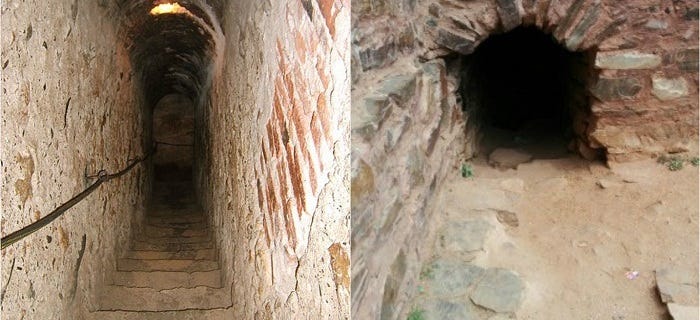A legend called Padmini
Synopsis : Some people have to die in the most painful manner before they become a legend that people talk about for centuries. Queen Padmini of Chittorgarh in Rajasthan was such a person who gave her life to preserve her honor and dignity than to submit to the sultan Alauddin Khilji of Delhi for his depravity. This is her painful story.

Source : Google painting of queen Padmini
I have always wanted to write about Queen Padmini but hesitated to bring forth her story to the world although every Indian child knows about her. People shed tears when they see the movie made of her called Padmavati that was finally released in India after a lot of controversy and protest because her sacrifice was too graphic and brings back very painful memories of Muslim atrocities of the past in vivid detail.
Her story dates back to 13th century Kingdom of Mewar in Rajasthan where king Ratan Singh ruled from the fort of Chittor. He had married Padmini after hearing about her exceptional beauty but her fame as a most beautiful queen spread far and wide in India. When Ratan Singh banished a Brahmin courtier named Raghav Chetan for fraud and black magic , he went to the court of the notorious sultan of Delhi Alauddin Khilji in revenge and told him about the exceptionally beautiful Padmavati. Khilji who laid siege of the fort of Chittor in 1303 became obsessed with the queen and wanted to bring her back to Delhi as his concubine but first he had to conquer the impregnable fortress called Chittor. Raghav Chetan had put a curse on the fort of Chittor saying that much blood will be spilled there. Sadly his curse came true.


Source : Google painting of Alauddin Khilji and as portrayed in the movie
Alauddin at first wanted to see her but a Rajput queen could not be seen by a man let alone a Muslim invader so a compromise was reached that her reflection in a mirror could be allowed. Alauddin after seeing her reflection became more obsessed and used deceit to lure the king Ratan Singh out of the fort that Khilji had failed to conquer after nearly six months of siege. His rations for his huge army were running low and his troops were restless so he took the king captive to force the queen Padmini to surrender to him.
Padmini then told Khilji that she will come with a retinue of her maids in hundreds of palanquins that she filled with her fiercest warriors dressed in disguise and rescued her husband before the Muslim guards knew what was happening. Once inside the fort, the doors were bolted. Khilji then attacked the fort with all his might and finally overcame the resistance but once inside, he saw nothing but death and the stench of burning flesh.

Source : Google painting of Queen Padmini burning in fire
Padmini had vowed that no one will ever defile her and take her by force so true to her Rajput creed, she decided to jump into the fierce flame and turned herself into ash. This act of bravery is called jauhar that became the exalted tradition of Rajput women when they knew that their warriors had lost a battle and they were in danger of being enslaved and raped so committed suicide. It is said that thousands of women inside the fort of Chittor committed jauhar and immolated themselves on that fateful day in 1303. The huge pit of fire where the women jumped to their agonizing death was where the queen was the first to jump.
People even today fear to visit the place and say that shrieks of women crying in pain while they burned alive are heard in the pit during the total darkness of the moonless sky. Some hear horses galloping and others talk of hearing the chime of ankle ornaments women wore and still wear in Rajasthan today. This is the painful legacy of a very beautiful queen who only wanted to serve her people in a true Rajput way but gave her life to protect her honor and dignity.
Her warriors gave a good account of themselves as only Rajput warriors could and killed over 20000 Muslim soldiers but they were no match for the huge well equipped army of Khilji and died in the process to the last man including Ratan Singh Chauhan himself.
Khilji had taken the fort but at a terrible cost to his army only to find ashes of the burning queen inside and went back to Delhi utterly disappointed.
By the 20th century, Rajput Hindu women of Rajasthan characterized Padmini as a historical figure who exemplifies Rajput womanhood. Hindu activists have characterized her as a chaste Hindu woman, and her suicide as a heroic act of resistance against the invader Khilji. She has been admired for her character, her willingness to commit jauhar instead of being humiliated and enslaved by Muslims, as a symbol of bravery and an exemplar like Meera.
Alauddin Khilji ruled his sultanate with cruelty, murder and mayhem the same way he came to power. He was totally ruthless and a fanatic Muslim who saw himself entitled to anything he desired including Padmini but he failed. His undecorated rectangular and a very sorry looking grave near the Qutub Minar in Delhi is a testament to his failed and sad legacy of a cruel and despotic ruler who was obsessed with sex and power. He ordered a tower that would be higher than Qutub Minar but it was never finished and its ruin can be seen near the Qutub Minar.

Source : Google photo of the undecorated and crude grave of Alauddin Khilji in the Qutub Minar complex in Delhi.

Source : Google photo of unfinished Alai Minar of Khilji that promised to be taller than the Qutub Minar nearby.
Padmini on the other hand became a legend during her time that every Rajput and Hindu woman aspired to follow her example. She remains today a national heroine of extraordinary courage who exemplified all womanhood in India with her moral ascendancy over the enemy and showed the world that her self-respect and dignity was worth dying for even in the most brutal way.

Source : Google photo of Chittor fort in Rajasthan .It is a haunted place now.
Chittor fort today is a haunted place millions of tourists visit. They wander through its grounds and empty shells of once luxurious palaces of kings and queens. They visit the palace of Padmini and the stairs in the tunnel that leads them to the jauhar pit where Padmini burned herself to death but no one dares to go down the steps.

Source : Google photo of the secret tunnel and stairs that lead to the jauhar pit in the fort.

Source : Google photo of the jauhar pit inside the Chittor fort where the queen burned herself alive along with many other women of her retinue.
Can anyone imagine and feel her pain while she and thousands of women burned in the flames so long ago to protect their honor ? Does anyone really know what it feels like to be consumed by flame alive? Padmini was not only beautiful ,she had a resolve of steel that was the hallmark of Rajput women while the Rajput warriors put fear into the Muslim armies that could never truly subjugate them.

Source : Google painting of queen Padmini

Source : Google painting of queen Padmini
It is said that the Fort of Chittor like many other such places in Rajasthan is soaked in blood of countless defenders who only wanted to live in peace within their kingdom and preserve their religion and traditions. But the price they paid in blood is staggering. The story of India is replete with countless massacres of once peaceful citizens by the invaders who built their empire on the skulls of the dead and forced their religion on hapless subjects ,destroyed their places of worship and treated them with cruelty matched only by the likes of Gengis Khan.
Note : My blogs are also available in French, Spanish, German and Japanese languages at the following links :

